Gelatin is a widely advocated culinary product. Our favorite sweets, creams and meat dishes are often prepared with gelatin. In stores, you can find it in powder form, in tiny pellets or strips. Apart from cooking, however, gelatin is an important component of human health and the beauty of the skin, nails and hair.
Gelatine is a substance of animal origin. It is a simple protein that is produced by hydrolysis of collagen from animal bones or cartilage, cooked in water. Gelatin is easily dissolved in water as the degree of solubility is proportional to the temperature of the water. The best temperature to dissolve gelatin in is 42 to 60 degrees Celsius. If dissolved at higher temperatures of 60 degrees, it loses its gelling properties.
Under the name Gelatin lies a product which is used in confectionery, wines, cosmetics, pharmaceuticals, etc. In industrial conditions, gelatine is extracted by boiling the weak acid bones and skin of animals and fish. Gelatin is classified as a food additive with E, number E441.
Composition of gelatin
Gelatin’s dry weight is 98-99% protein, but it has less nutritional value than many other protein sources. In gelatin are found especially high levels of the nonessential amino acids glycine and proline (those that the human body can produce by itself), but it lacks essential amino acids (those that the human body can not produce itself). It contains no tryptophan and is low in isoleucine, threonine and methionine.
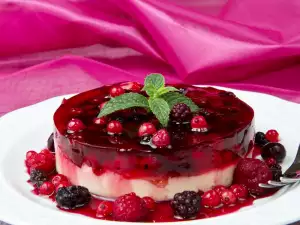
The approximate amino acid composition of gelatin is: glycine 21%, proline 12%, hydroxyproline 12%, glutamic acid 10%, alanine 9%, arginine 8%, aspartame acid 6%, lysine 4%, serine 4%, leucine 3%, boil 2 %, phenylalanine 2%, threonine 2%, isoleucine 1%, hydroksilizine 1%, methionine and histidine <1% and tyrosine <0.5%. These values vary depending on the source of raw material and production technology.
Standards for the production of gelatine
Much of the gelatin, which is commercially available, is made from pig skin. For the production of gelatine for human consumption are established health requirements. Production of gelatine for human consumption generally uses the bones, hides and skins of ruminants farmed pork skins, birds, tendons, hides and skins and bones of fish.
The law is clear that there is no use of bone from ruminant animals born, reared or slaughtered in countries of Category 5 for the production of gelatin. They do not allow the use of gelatin production with hides and skins that undergo a process of tanning.
In the final stage of manufacture, gelatine may undergo a drying process where necessary - and spraying or lamination.
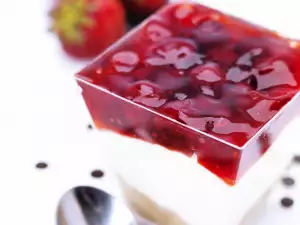
Gelatin in cooking
The ability of gelatin to give liquid a gel consistency is why it is so often used in the preparation of creams, cakes, souffles, jellies, etc. In stores, you can find gelatin granules or strips, and it’s sold in pharmacies capsules. You have to distinguish between true bone gelatin and one that is sold in bags in stores. Natural Bone Gelatin can be bought from a pharmacy or an undertaking engaged in winemaking. Usually the package mentions that gelatine is made of bone.
Pellets and strips of gelatin must be soaked first in cold water to swell. Then this mixture is usually molten, or added to hot sauces and syrups. It is important to know that gelatin should never boil, because it makes it lose its properties.
Melting of gelatin should be done at low temperature, while stirring. Usually 1 10g packet of gelatin needs 10-15 tablespoons cold water or around a coffee cup of water. 1 liter of liquid takes about 30 to 40 g gelatin. In the cold, a small quantity is enough, use more for hotter days. The hardness desired of the jelly can be controlled, solid jelly needs put plenty of gelatin and a softer - less.
Benefits of gelatin
You may be surprised, but gelatin has many benefits for our health. It is an excellent assistant of healthy and beautiful nails, hair, skin and joints. To strengthen the nails 10 g gelatin a day are needed. The Chinese used gelatin as a drug, extracted only from donkey skin. There is evidence that dishes with it are suitable for gastrointestinal diseases, because they soothe mucous membranes. Additional gelatin is recommended for arteriosclerosis.

Gelatin is used as a powerful tool for the treatment of coxarthrosis. In this case, the principle of treatment with gelatin is based on the fact that man is omnivorous and we are designed so that we need to deliver the items needed for cartilage and joints through our gnawing of the bones of our prey. The successful treatment of coxarthrosis with gelatin needs a parallel intake of natural calcium.
The principle of the treatment is very simple - boi animal bones and the broth obtained is used in dishes. A second option is to mix fresh bone gelatin in 1/2 yogurt. Eat it at night, and at the same time, prepare another such portion to eat in the morning.
Gelatin has a laxative effect. You will feel the rumble in your belly until your stomach gets used to it. Usually the result of this treatment can be felt after 16-20 days or months. If no improvement, continue treatment even onece month, and reduce your intake of gelatin to 1 day.
Dangers of gelatine
You should know that gelatin is one of the few foods that cause total loss of protein if it gets extreme and is a frequent component of your daily diet. This means that we should not over-consume.
Furthermore, gelatin is not recommended for constipation for cardiovascular disease, because it helps blood to clot.

Beauty with gelatin
Along with culinary fun, gelatin can bring lasting beauty. You can apply a regular gel mask that can strengthen hair, increase its volume and encourages more rapid growth.
For the mask, you need 1 tablespoon gelatin, 1 tsp shampoo and 3 tablespoons water. Mix water and gelatin in a bowl and stir until homogeneous. Allow the mixture to rest a bit, add shampoo and mix again. Apply on hair, rub well, wrap your head with a plastic cap and stay with the mask for 1 hour. Then rinse with water and shampoo.
A second type of mask for beautiful and healthy hair is a combination of gelatin and egg yolk, which has an immediate effect. As a result, your hair is softer due to the protein contained in egg yolks and gelatin. For the mask, mix 1 egg yolk, 1 tablespoon gelatin powder, 1 tablespoon vinegar, 1 tablespoon olive oil. Stir the mixture and brush the hair along its length. No need to rub into the roots. Leave to soak for 1 hour and then rinse.
There are Asian recipes for beautifying the skin with gelatin. The substance is very effective in removing blackheads. For this purpose, you need 2 tablespoons milk or water and 1-2 ts gelatin. Mix the two components, allow ot to stand for 10 minutes to melt put it on your face. Once dry, peel off and enjoy the pleasant effect and clean skin.
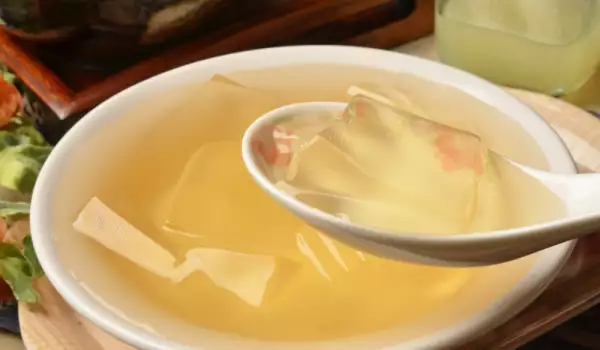

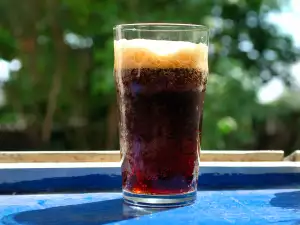
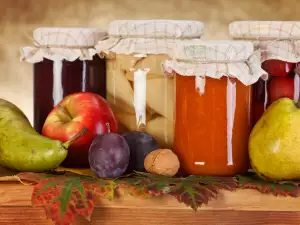





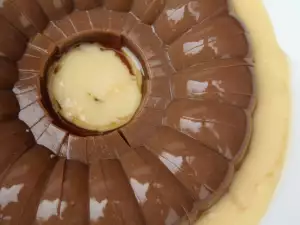
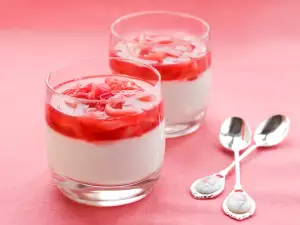
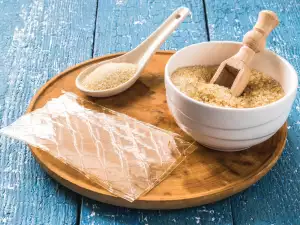

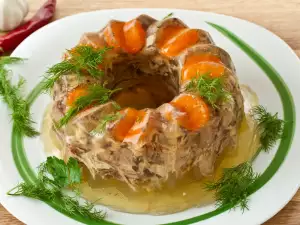






Comments